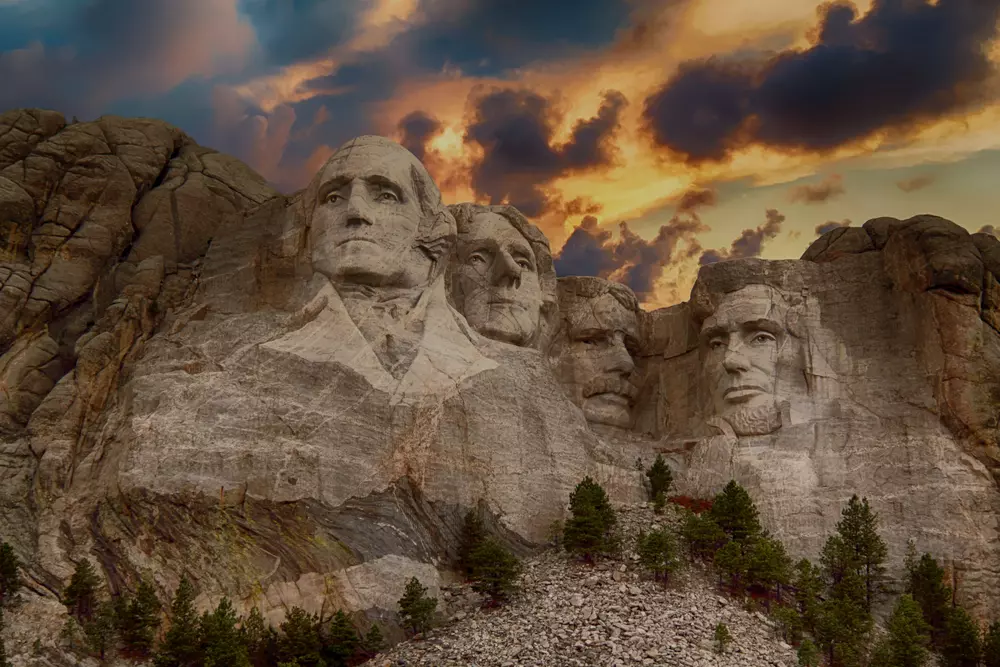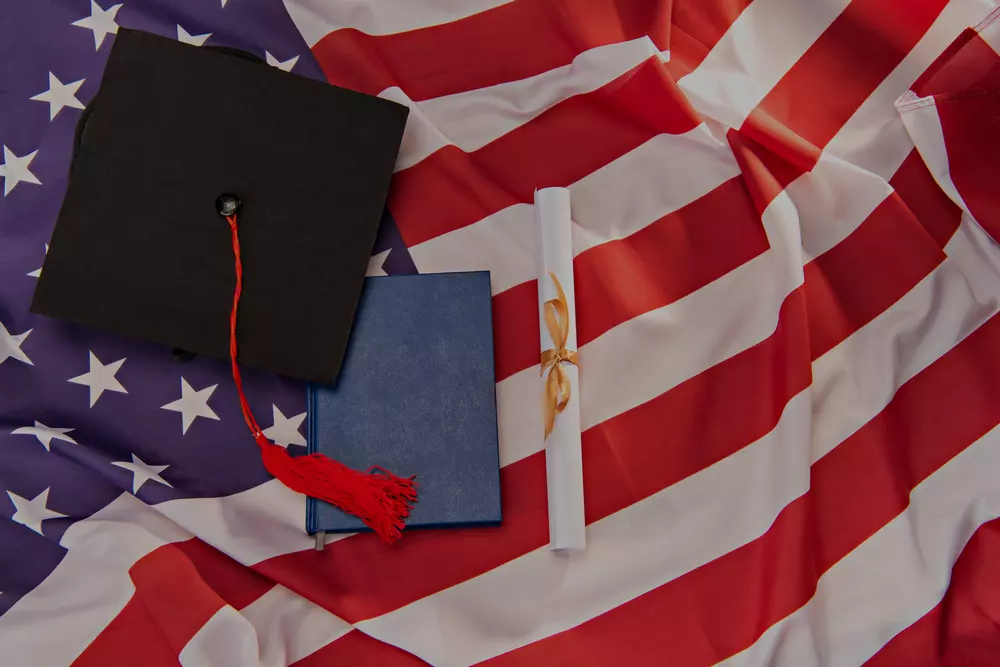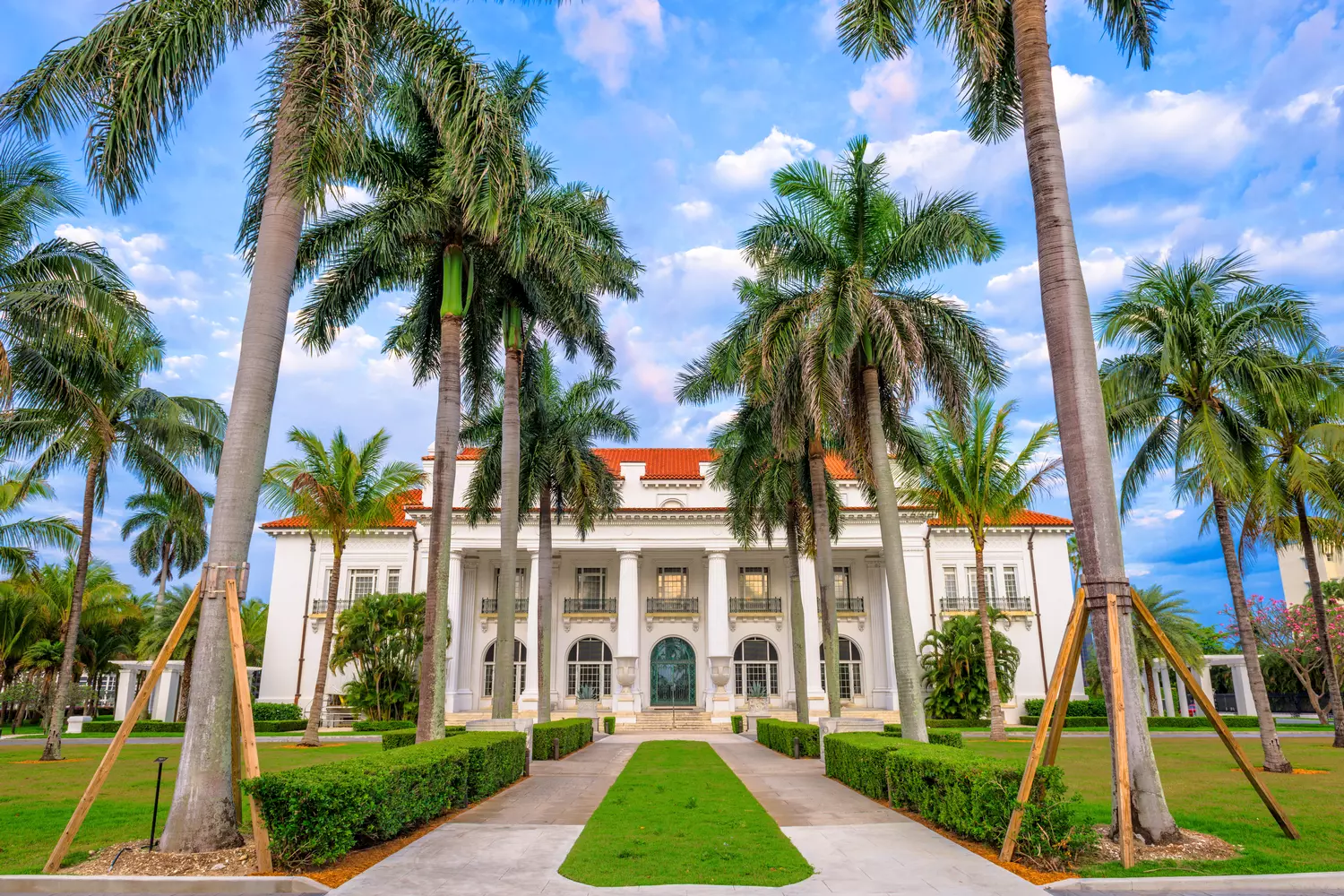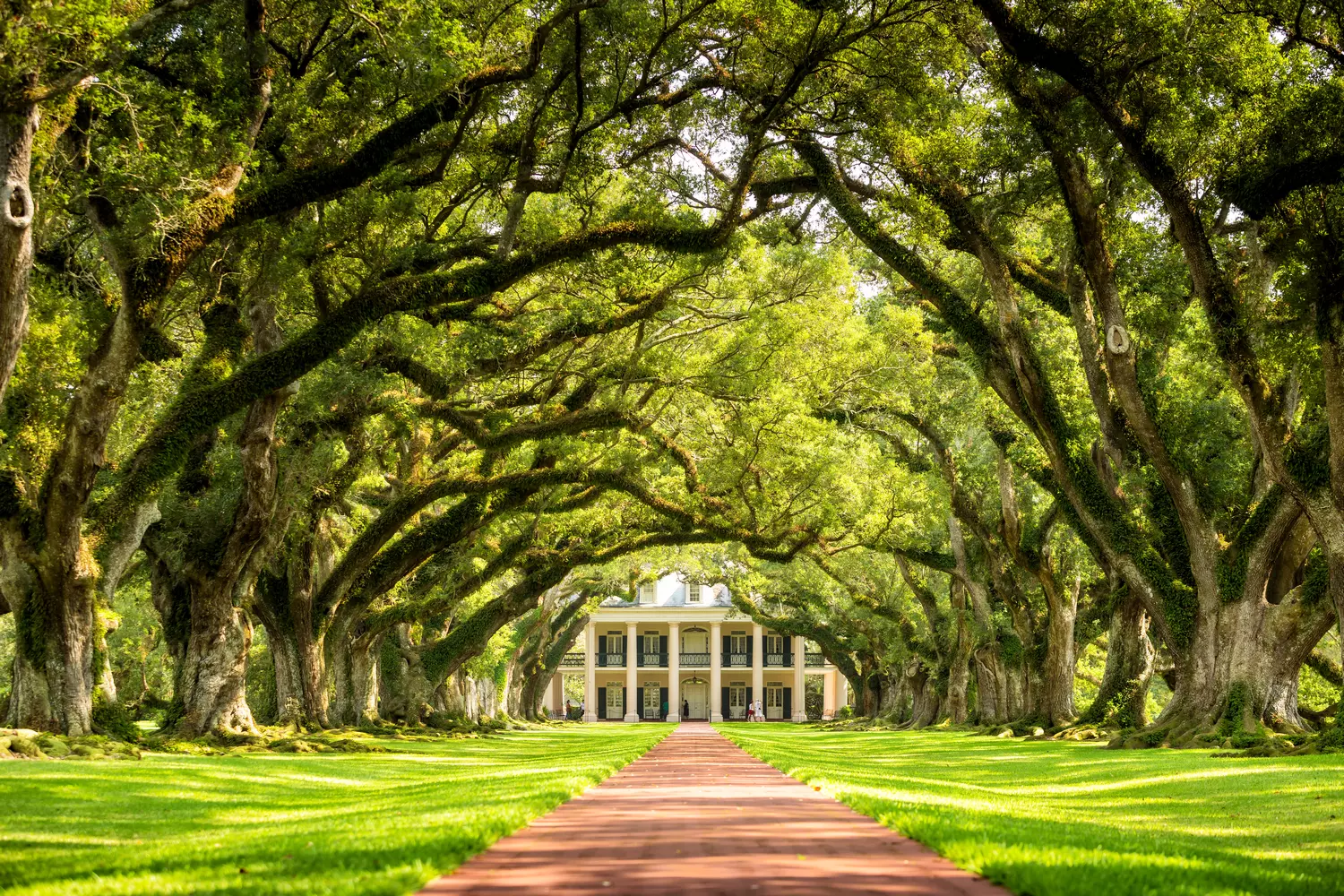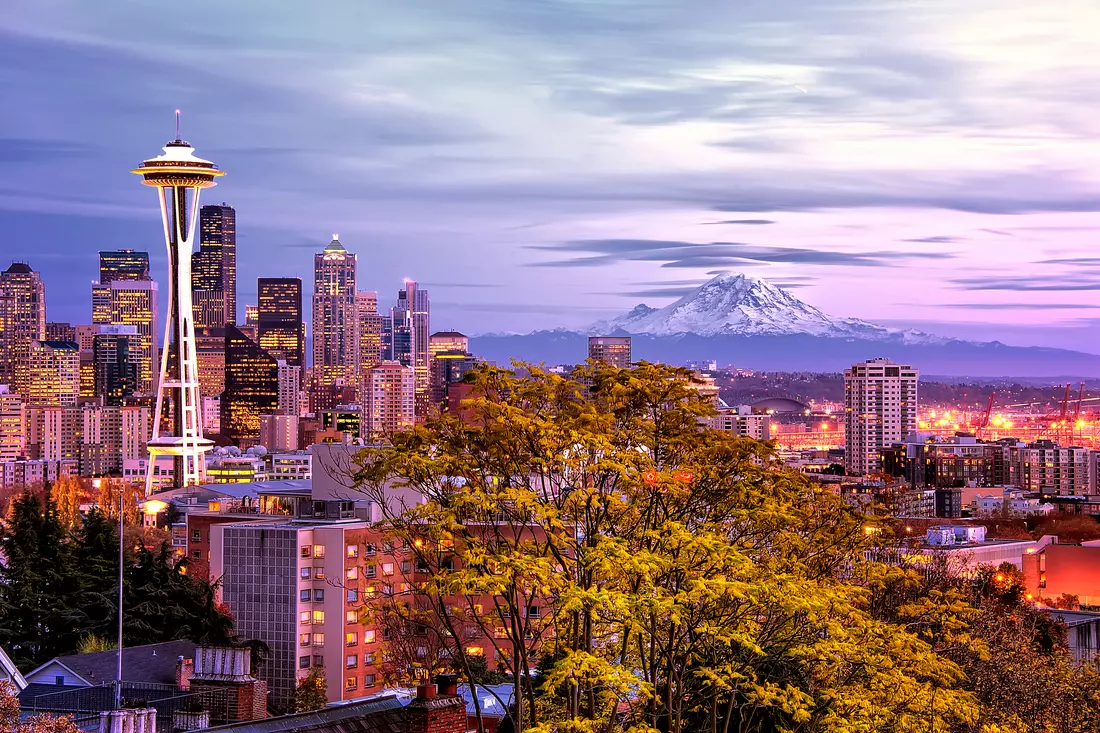America and guns are inseparable concepts. Here, a gun is not just an object — it is part of the cultural code, historical memory, and a heated social debate. To understand the U.S., you need to understand the country’s relationship with firearms.
In America, a gun is more than just a rifle on the wall or a holster on the hip. It is a right fought for by the Founding Fathers. It is a topic that divides society into two irreconcilable camps. It is millions of people who believe that an unarmed citizen is a powerless citizen. On the other hand, there are millions who fear another shooting at a school or supermarket and dream of tighter control.
America is one of the few countries in the world where the right to bear arms is enshrined in the Constitution. Yet each state has its own rules. And while in Texas you can enter a café with a pistol on your hip, in New York, that can lead to criminal charges.
In this article, we will cover:
- What the law says about carrying guns;
- Which states allow open or concealed carry;
- Who has the right to buy guns and how it happens;
- Why the right to bear arms has become a symbol of freedom and, at the same time, a cause of fierce debate.
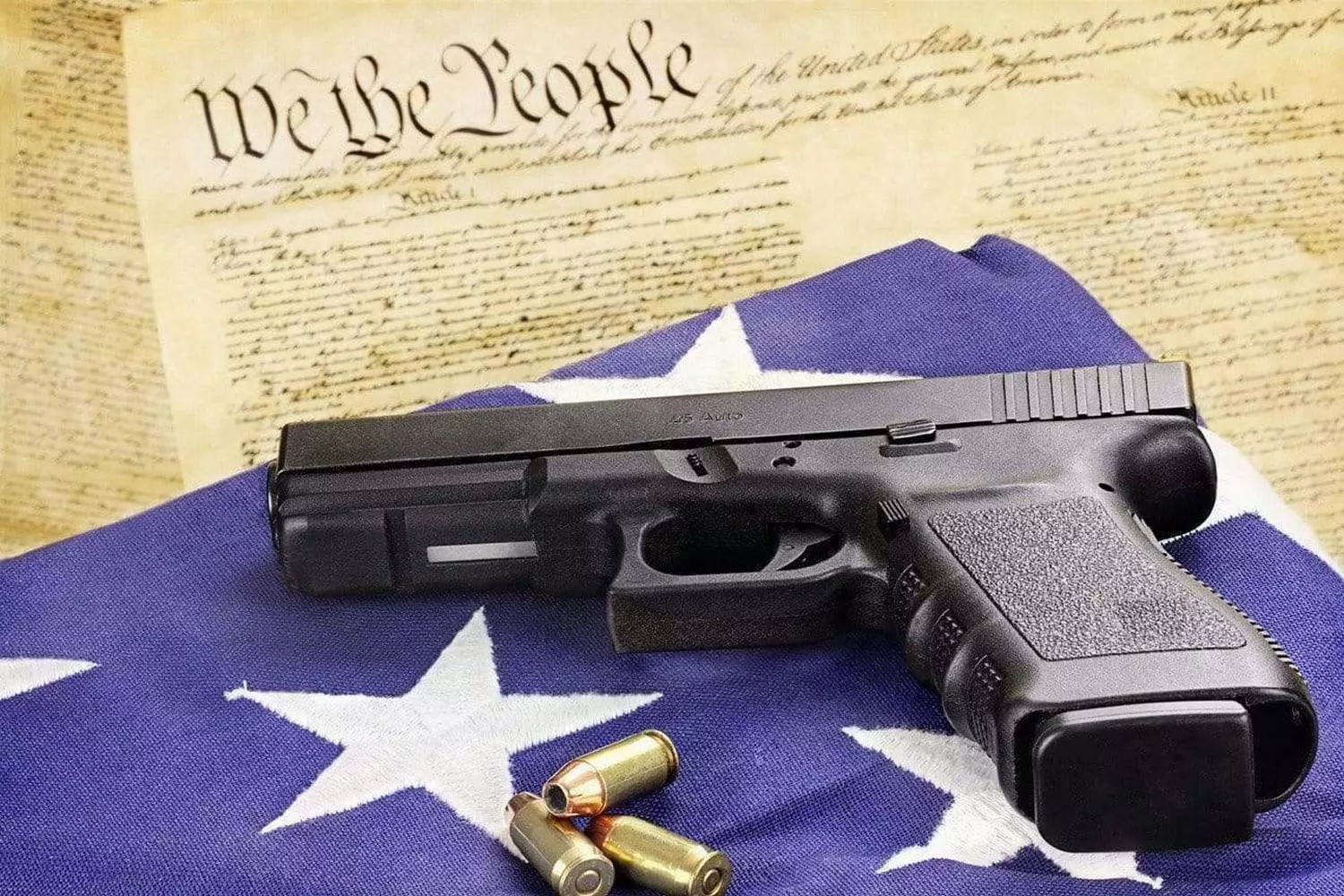
There are over 400 million firearms registered in the U.S. — more than the country’s entire population. On average, that’s 1.2 guns per American.
Guns as a Right: How the Second Amendment Became Sacred
To understand why Americans have the right to carry guns — and fiercely defend it — you need to go back to the very origins of American statehood and walk through key historical stages, from the colonial era to the present day.
- 01. Colonial Times and the War of Independence
In the 17th and 18th centuries, settlers lived in what would become the U.S., and they had to protect themselves from Native American attacks, bandits, and the wilderness. Every man had a weapon — it was both a norm and a necessity. Militias formed spontaneously from civilians. It was then that the idea arose that the people should be able to arm themselves independently of the government.
During the War of Independence (1775–1783), Americans fought against the regular army of the British Empire. Their main strength was armed citizens and volunteer militias. The victory reinforced the belief: a free people is an armed people. - 02. 1791: The Constitution and the Second Amendment
After gaining independence, the young republic faced the question: how to protect freedom from possible tyranny by the new government? The answer was found in the Bill of Rights, specifically in the Second Amendment: "A well regulated Militia, being necessary to the security of a free State, the right of the people to keep and bear Arms shall not be infringed." Since then, it has become the cornerstone of the entire gun culture. - 03. 19th Century: Guns on the Frontier
During the settlement of the Wild West, guns were literally vital. They were used for hunting, protection from robbers, Native American attacks, and sometimes neighbors. Every settler had a revolver, rifle, or carbine. Guns became an integral part of American folklore, literature, and cinema. Legends were born: cowboys, duels, sheriffs. Although laws varied by county, overall, guns remained a personal right and part of daily life. - 04. 20th Century: First Restrictions and Mass Spread
In 1934, the first federal gun law was passed — the National Firearms Act. It regulated automatic weapons and silencers. Then in 1968, after the assassinations of Kennedy and Martin Luther King, the Gun Control Act was enacted, tightening regulations on gun sales and ownership.
Meanwhile, the number of guns in civilian hands continued to grow. Millions of families acquired rifles, shotguns, and pistols. In the 1980s and 90s, the topic of self-defense and the right to carry guns came to the forefront again amid rising urban crime. - 05. 21st Century: Debates, Tragedies, and Strengthening Identity
Since the early 2000s, the number of mass shootings sharply increased. Each tragedy sparked waves of debate and calls for restrictions. But in response, Second Amendment advocates became more active.
Guns also became a political marker. Among Republicans and conservatives, gun ownership symbolizes freedom and distrust of government. Among Democrats, it prompts calls for reform and tighter control.
Guns in the U.S. are almost like a religion. They are passed down from father to son. They are carefully stored in safes. They are discussed in bars, shooting ranges, hunting trips, and in the Congress.
Supporters call guns the last bastion of democracy. Opponents see them as a source of violence and fear. But even the fiercest critics admit: the right to bear arms in the U.S. cannot be uprooted without rethinking the very idea of American freedom.
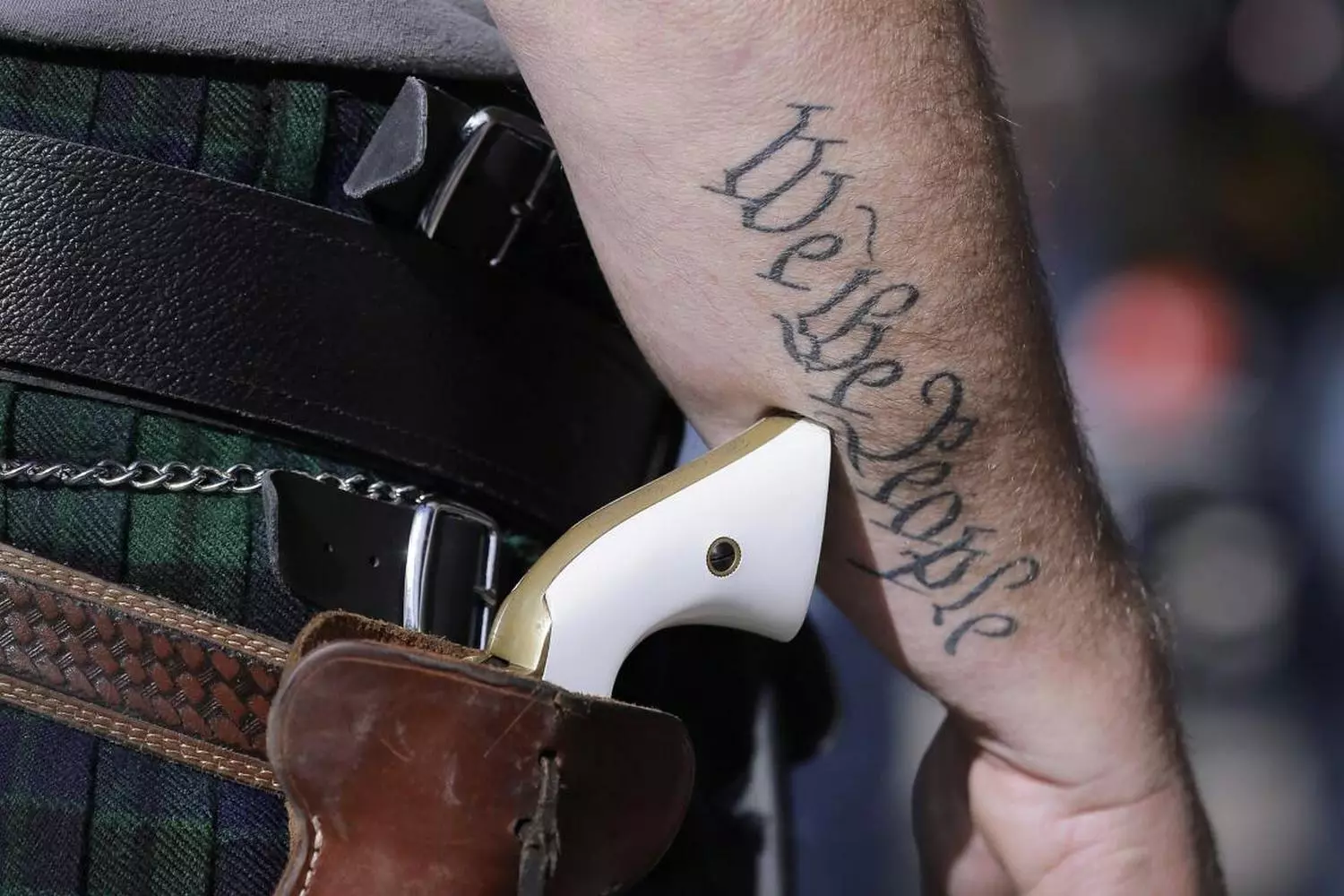
50 States — 50 Laws: How Gun Rights Work in Practice
If you think there is a single gun law in the U.S., prepare for a surprise. America is a federal state, which means each state has the right to set its own rules for owning, purchasing, and carrying firearms. Federal legislation is the framework, but each state has its own walls and roof.
- 01. What Federal Law Regulates
Basic restrictions passed by Congress apply nationwide. The main provisions are:
- Age Restrictions
Rifles and shotguns from 18 years old, pistols from 21 years old. - Prohibition on Buying Guns for Persons Who
Have felony convictions, officially diagnosed mental disorders, a history of drug addiction, or lack citizenship or permanent legal status. - Mandatory Background Check Through NICS (National Instant Criminal Background Check System)
When buying from a licensed dealer. - Strict Control Over Automatic Weapons, Silencers, and Short-Barreled Shotguns
Under the National Firearms Act of 1934.
But that’s where the common ground ends — what follows is an American legal kaleidoscope.
- 02. How States Set Their Own Rules
The differences between states are huge. The same gun store may be easy to access in one county and strictly prohibited across the border. Here are some striking examples:
- Texas
One of the most “free” states: open carry of pistols without a license (so-called constitutional carry) is allowed. There is also no requirement to register purchased guns. - California
One of the strictest states. A license is required even for concealed carry. Guns must be stored according to special standards. Magazines holding more than 10 rounds are banned, as are many types of semi-automatic weapons. - Illinois
To buy a gun, you must obtain a FOID — Firearm Owner's Identification Card. Without it, you cannot legally buy or even touch a firearm. This is a separate card issued by the police. - Florida
Concealed carry is allowed with a license, but open carry is prohibited. The state is in the shall-issue group — meaning if you meet the criteria, the authorities must issue you a permit. - New York
Is an example of a may-issue state: even if you meet all requirements, authorities can deny a license. The practice varies widely by county: it’s easier to get a permit in rural areas, nearly impossible in New York City. - Alaska and Arizona
Support so-called constitutional carry: no license is required for carrying or purchasing. The only condition is being of legal age and having no federal prohibitions.
Entering a store with a gun — legal in one state, a criminal offense in another. Storing a rifle in the trunk — fine in one state, a violation of transport laws in another. That’s why tourists, immigrants, and even U.S. citizens should carefully study local laws.
This is one reason why gun carrying in the U.S. can’t be described by a single formula. It’s a mosaic of different approaches, fears, traditions, and political preferences. In some places, citizens see guns as a natural extension of civil liberties; in others, as a threat to public order.
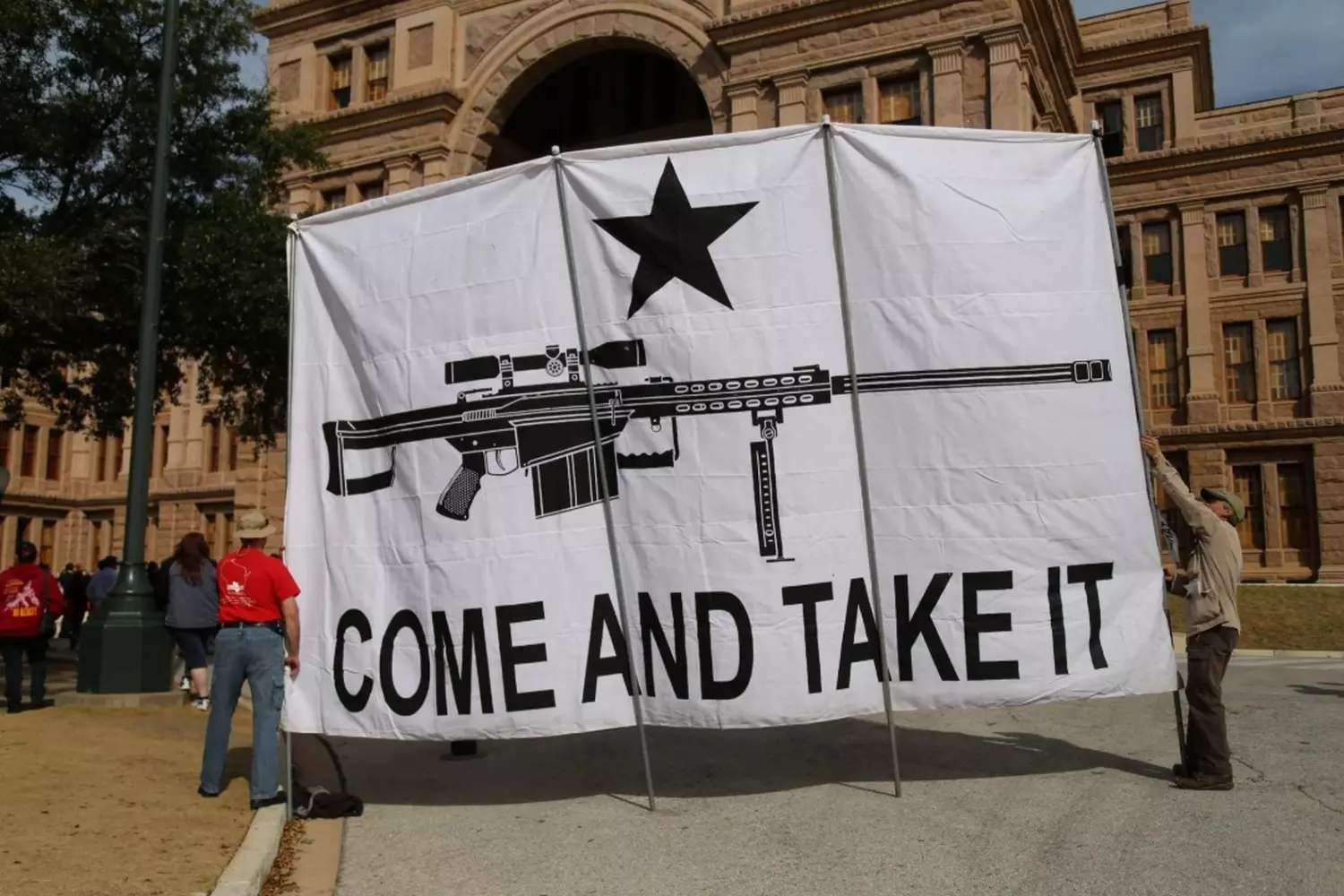
Open vs. Concealed: How Americans Carry Guns and Who Allows It
Owning a gun is one thing. Carrying it is quite another. This is where legal nuances and cultural differences begin. In the U.S., there are two types of carrying firearms:
- Open carry
The firearm is visible to others: a holster on the hip, slung over the shoulder, or worn on the chest. This type of carry is often seen as part of one’s image or a statement of rights, especially in the South. - Concealed carry
The pistol or revolver is hidden under clothing, in a bag, or in a belt holster. It’s not visible but quickly accessible.
Depending on the state, these forms are regulated differently. All laws can be roughly divided into three categories:
- 01. Constitutional carry — without a permit
Some states completely reject licensing. It is believed that the Second Amendment is the only permit a citizen needs. Examples:
- Texas — since 2021, both open and concealed carry are allowed without a license.
- Alaska — one of the first states to abolish permits.
- Arizona — supports full freedom in carrying firearms.
- 02. Shall-issue — based on formal criteria
Here a permit is required, but authorities must issue it if the applicant meets the criteria: age, no criminal record, completion of training. Examples:
- Florida — license is issued after training and a background check.
- Michigan, Ohio, Pennsylvania — follow the same model.
- Utah — popular among gun owners because its licenses are recognized by dozens of other states.
- 03. May-issue — at the discretion of authorities
Even if a person passes the exam and background check, authorities may deny the permit. The reasoning: "no perceived need" or "may threaten public safety." Examples:
- New York — concealed carry licenses in the city are nearly impossible to obtain.
- California — strict policies, especially in densely populated counties.
- Hawaii — formally allowed, but licenses are rarely issued.
Some interesting details:
- In some states (e.g., Oklahoma), open carry is permitted, but concealed carry requires a license.
- Washington D.C. previously banned concealed carry entirely, but the U.S. Supreme Court forced a policy revision.
- Some states recognize licenses from others (called reciprocity), but not all. This creates confusion even among experienced gun owners.
Open or concealed carry is not just a choice of style. It’s a matter of identity, culture, law, and trust in society. In America, a gun under your shirt or on your belt is always a statement. And it’s best to know beforehand in which state that statement is legal.
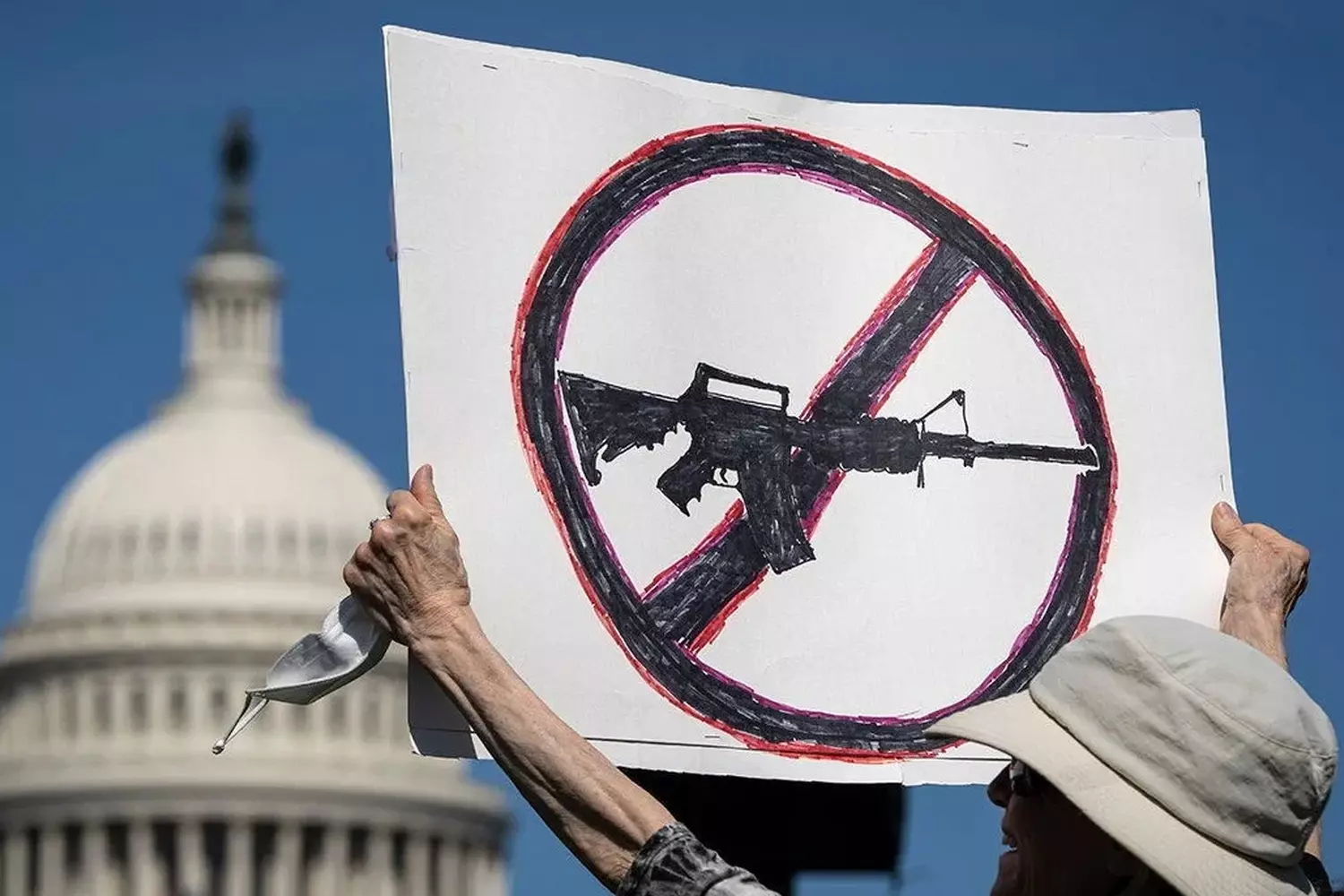
How to Buy a Gun in the U.S.: Step-by-Step from Display to Discharge
Contrary to popular myths, buying a firearm in the U.S. is not as simple as “walk in, pick a rifle, and leave.” There is a strict procedure, especially when purchasing from a licensed dealer (which is the majority of cases). However, compared to many other countries, the process remains relatively accessible. Here’s a step-by-step overview of how it works:
- 01. Choosing the firearm: at a store, gun show, or online
First, decide what you want: a pistol for self-defense, a hunting rifle, or a semi-automatic rifle. You can acquire it:
- At a licensed gun store — the most reliable way;
- At a gun show — dealers operate there, but in some states, private sales may not require background checks;
- Online — a wider selection, but the firearm is shipped to a nearby licensed dealer (FFL dealer) where you complete the standard checks.
- 02. Filling out ATF Form 4473
This is a mandatory federal document completed at the point of sale. It includes:
- Your name, address, date of birth;
- Citizenship or immigration status;
- Criminal history;
- Any mental health issues or substance dependencies;
- Military service status, including dishonorable discharge.
The form is signed under penalty of perjury — lying leads to criminal charges. It’s no mere formality.
- 03. Background check: federal screening in minutes
After submitting the form, the dealer queries the NICS (National Instant Criminal Background Check System), managed by the FBI. It checks for:
- Criminal records, restraining orders, psychiatric diagnoses, illegal immigration status, and others. The result can be:
- Proceed — sale approved;
- Delay — wait up to 3 business days;
- Deny — sale prohibited.
- 04. Waiting period
Not all states allow immediate pickup after approval. Some impose a “cooling-off period” from 3 to 10 days to prevent impulsive crimes. Examples:
- California — 10-day waiting period for everyone;
- Florida — 3 days for pistols if you don’t have a concealed carry license;
- Illinois — requires a FOID card first, then waiting period.
- 05. Finalizing the purchase and receiving the firearm
After approval and any waiting period, you can collect your firearm. Some states require paying taxes or fees. You receive a receipt, instructions, and often recommendations on safe storage. - 06. Courses, exams, and practice (where required by states)
In some jurisdictions, buying a firearm isn’t possible without:
- A firearms safety course;
- A test on laws and safe storage rules;
- Demonstrating shooting skills—usually for carry licenses, not purchase;
- California requires passing the Handgun Safety Certificate test;
- Maryland mandates training and fingerprinting;
- Massachusetts requires safety certification through a course.
What about private sales? This varies by state. Some allow private transfers without background checks; others require the transaction to go through a licensed intermediary. This loophole often fuels criticism and calls for universal background checks on all firearm transfers.
Buying a gun in the U.S. isn’t just an economic transaction. It’s a political, cultural, and legal act influenced by dozens of factors. Convenience, speed, and accessibility vary widely by state. But the one universal rule remains: play by the rules, and the system will permit you.
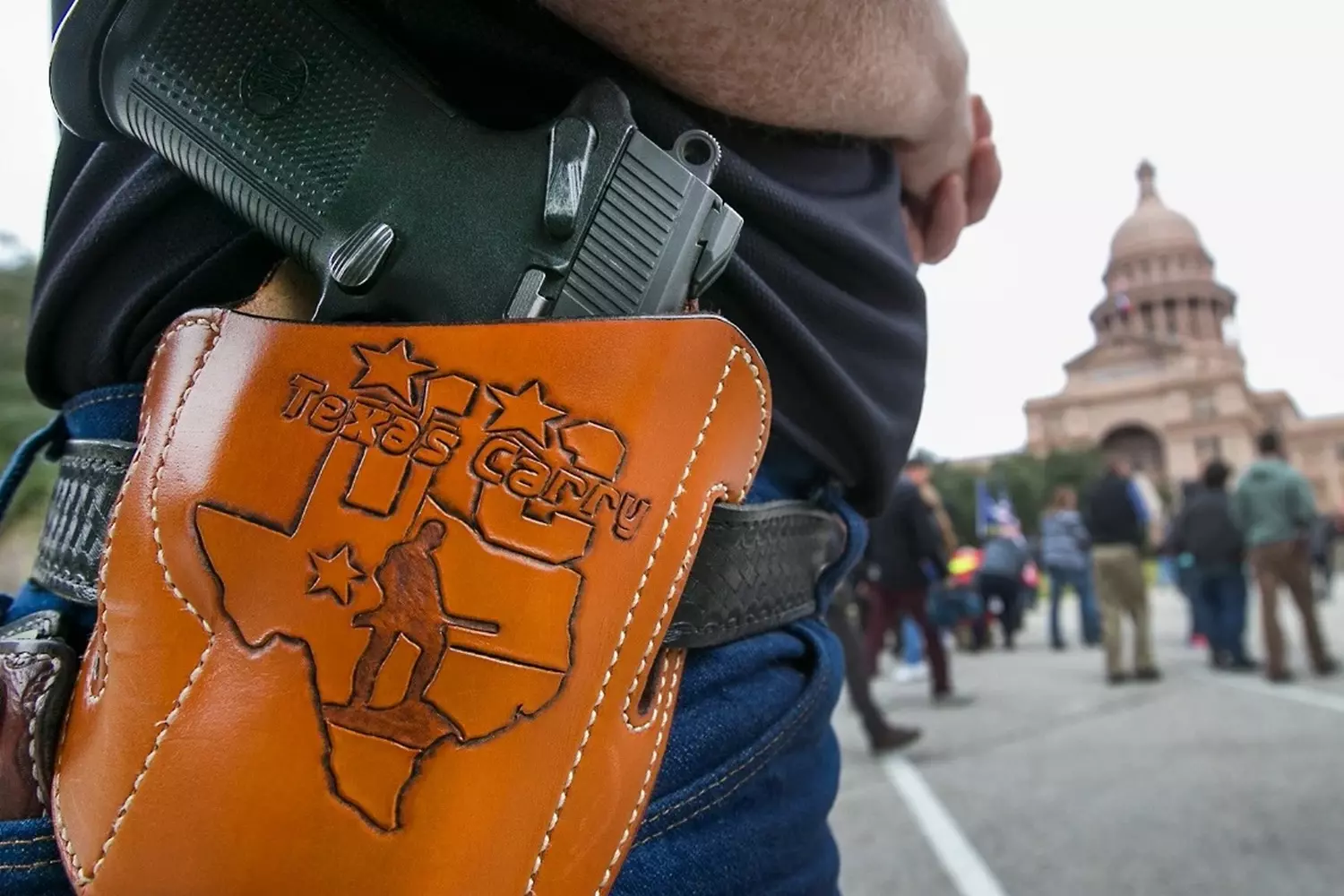
Guns Aren’t for Everyone: Who Has the Right to Own Firearms in the U.S. and Who Doesn’t
Despite the reputation as the "most armed country in the world", the United States does not allow just anyone to own firearms. There is a clear list of restrictions, and violations carry serious criminal liability. Federal and local laws define who may become a gun owner and who is categorically prohibited.
- 01. Who has the right to own a firearm
By default, any U.S. citizen or resident can purchase a firearm if:
- They are 18 years old (for rifles and shotguns) or 21 years old (for pistols);
- They have no felony convictions;
- They are mentally competent and not registered as mentally ill;
- They do not abuse drugs or alcohol;
- They are U.S. citizens or have legal immigration status.
- 02. Who cannot own firearms: list of prohibited categories
At the federal level (according to 18 U.S.C. § 922(g)), firearm ownership is prohibited for the following persons:
- People convicted of felonies, especially those sentenced to more than one year imprisonment. Even if the sentence has been served — the ban remains.
- Mental incompetents declared so by a court or official institutions. This includes those who have been involuntarily committed or deemed dangerous to themselves or others.
- Drug addicts or alcoholics, if the addiction is officially documented or confirmed by tests/medical records.
- Persons stripped of civil rights for crimes related to violence or fraud.
- Individuals under court restrictions, such as those prohibited from approaching specific persons (most often in domestic violence cases).
- Illegal immigrants or those whose visa status has expired. Even if they already purchased a weapon, their possession is considered illegal.
- U.S. military deserters and persons dishonorably discharged from military service.
- Persons who renounced U.S. citizenship to avoid criminal prosecution.
- 03. What about foreigners?
An interesting point: foreigners legally residing in the U.S. can, in some cases, also purchase firearms — but under additional conditions. For example:
- Green Card holders (Lawful Permanent Residents) are almost on par with citizens in terms of rights to buy and possess firearms.
- Temporary visitors (e.g., on F, H, B visas) may own firearms only with special permits and confirmed necessity, such as hunting, sport shooting, or private security work.
They may also need a letter from their employer, proof of membership in a hunting club, training certificates, and no violations of visa conditions.
- 04. Important clarification: restriction ≠ confiscation
If a person falls into one of the "prohibited categories" after already acquiring a firearm (for example, after being convicted), they must surrender or sell the firearm — otherwise possession becomes a federal crime. - 05. What happens upon violation?
- Purchasing a firearm in violation of the ban (for example, through a straw buyer or using false documents) is a criminal offense punishable by up to 10 years in prison.
- Providing false information on the ATF Form 4473 is also a federal crime.
- Violating a court order (such as in domestic violence cases) is treated as an aggressive crime with aggravating circumstances.
Owning firearms in the U.S. is not just about “having a weapon.” It is a status, with rights and responsibilities. The law is lenient to those who follow the rules and harsh to those who try to bypass them. This is the foundation of the American approach to freedom: freedom for the responsible.
Safety First: How to Store Firearms and When They Can Be Used in the U.S.
The right to own firearms in the U.S. is not only a freedom but also a great responsibility. The law expects from the owner not just lawful purchase, but also proper storage and use in critical situations. Mistakes can lead to serious consequences, including prison time.
- 01. How to properly store firearms at home
Most firearm tragedies in the U.S. occur not on the streets, but at home — due to careless storage. Therefore, many states (and federal recommendations) enforce strict guidelines:
- Firearms must be inaccessible to children.
- The best solution is a metal safe with a code lock or biometric scanner.
- An alternative is a trigger lock, which blocks the trigger.
- 02. Store firearms and ammunition separately
- Even if a perpetrator gains access to the firearm, it will be useless without ammunition.
- A separate locked safe or box for ammunition is mandatory.
- 03. Regularly check the condition of locks and mechanisms
Especially if children, elderly, or mentally ill persons live in the house. - 04. Do not leave firearms in a car overnight.
This is a common mistake, especially among beginners. Cars can be broken into, and the owner bears responsibility. - 05. Law and practice: who is responsible for improper storage?
Many states have laws holding owners accountable. If a child gains access to an unlocked firearm — even without firing a shot — the owner may face fines (up to $10,000), criminal charges, or revocation of their gun license. For example, in Massachusetts, storing an unlocked loaded firearm in a home with children is a criminal offense, even if nothing happened.
When can firearms be used: the limits of self-defense
American laws recognize the right to self-defense, but with important nuances. Firearms can only be used when there is a real, immediate threat to life or serious bodily harm. Key rules to know:
- 01. Necessity
You must truly believe that there is no other way to protect yourself or others. This must be justified — not assumptions, but an actual situation. - 02. Principle of proportionality
You cannot shoot someone over a stolen bicycle or a verbal argument. The threat must be to life or health, not just "unpleasant." - 03. Last resort
Using a firearm is allowed only if there are no other options — you could not run away, hide, or call for help. - 04. “Stand Your Ground” and “Castle Doctrine” laws
- Castle Doctrine
Allows the use of firearms inside your home or on your property without the obligation to retreat. - Stand Your Ground
A law in some states (e.g., Florida, Texas) that permits using firearms outside the home if a threat arises in public or in a vehicle — and you are not required to retreat.
- 05. What to do after using a firearm?
- Immediately call the police
Even if no one was hurt, the incident must be reported. - Do not touch the firearm until police arrive
It’s best to place it on the floor and step away. - Stay calm and do not give unnecessary statements without a lawyer
Any word can be used against you.
Interesting fact: According to the U.S. Department of Justice, there are about 500,000 cases per year in the U.S. where firearms are used in self-defense — and most often without a shot fired. The mere presence of a firearm often deters the criminal.
Storing and using firearms is not just a matter of law, but also maturity, common sense, and self-control. In the U.S., it is important not only to own a gun — but to understand when and why it may be needed. And to be ready to take full responsibility for it.
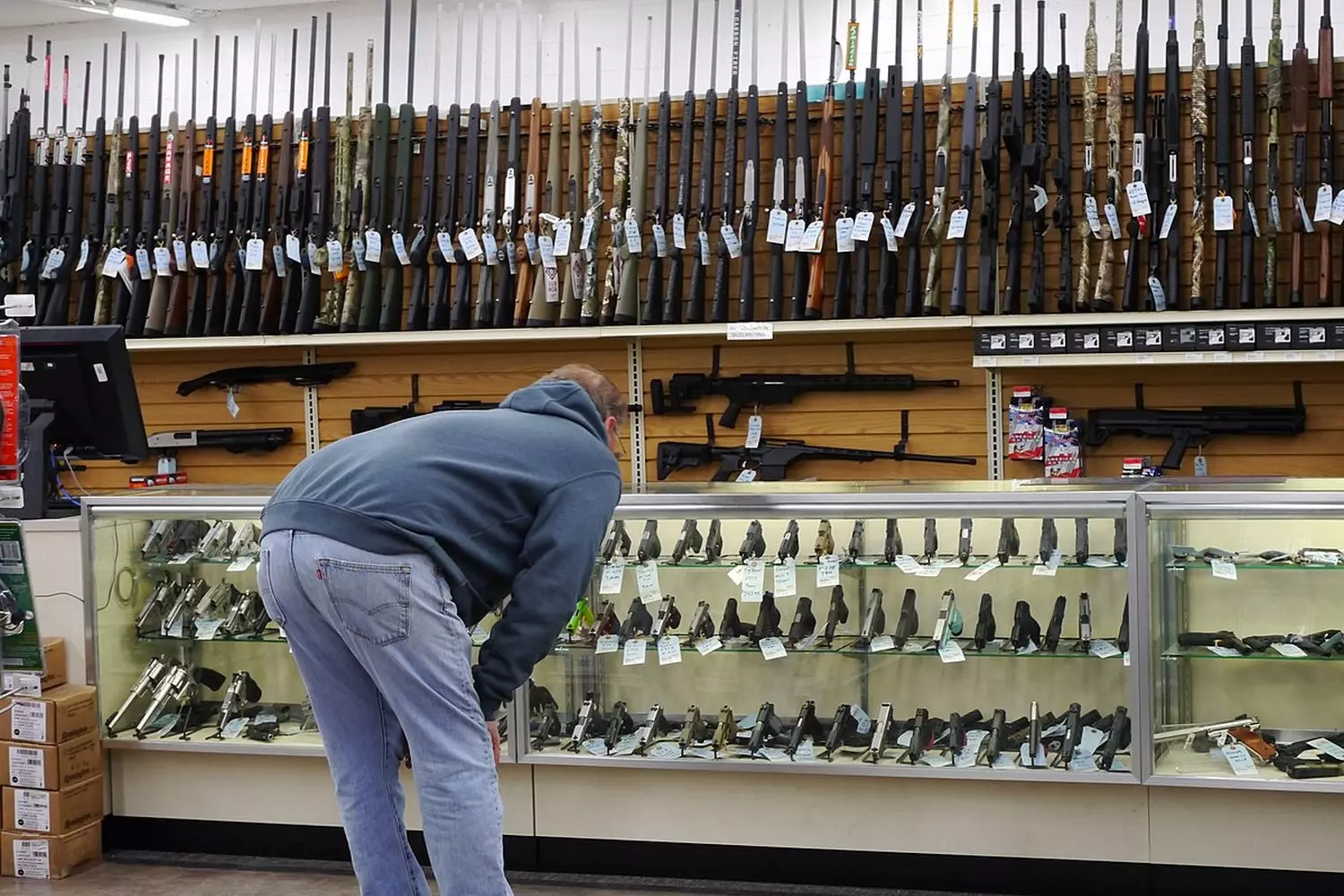
Who Are the True American Bikers
Not About Bullets, But Principles: Why Americans Value the Right to Bear Arms So Deeply
Firearms in the USA are much more than just mechanisms made of steel and bullets. They are part of a national myth deeply rooted in history, culture, and identity. They symbolize not aggression, but autonomy. Not war, but vigilance. For millions of Americans, guns are not about shooting — they are about freedom.
- 01. Origins: guns as a guarantee of survival and independence
The American story began with guns in hand. Settlers tamed the Wild West, protected farms from robbers and wolves, and formed militias against the British Crown. Survival — both physical and political — was impossible without a rifle.
This feeling of “we’re on our own, and no one is coming to save us” became the foundation of the Second Amendment to the Constitution. Freedom was won not just with words, but with armed resolve. - 02. Why guns = freedom
For supporters of gun rights in the U.S., it’s not a hobby or sport. It’s:
- A guarantee of personal inviolability;
- A tool to protect family in emergencies;
- A barrier against abuse of power;
- A reminder that government serves the people, not the other way around.
One popular slogan at pro-gun rallies says: “Armed citizens are free citizens”.
This idea is especially strong in rural and sparsely populated areas where police are tens of miles away and neighbors are separated by forests. There, a gun is not a choice, but a necessity.
- 03. A family heirloom, not just an object
In many American families, guns are almost sacred. They are:
- Passed down from father to son like watches or family rings;
- Stored in special cabinets, sometimes decorated with crests and quotes;
- Recalled with pride, telling stories of how a great-grandfather fought in wars or defended the farm.
Guns are part of identity, especially in conservative and patriotic communities. People talk about them with the same respect as they do about the flag or family Bible.
- 04. The gun culture is not chaos, but a system
Many assume: “If there is so much gun ownership, it must be anarchy.” In reality, it’s quite the opposite. In the U.S., millions of gun owners:
- Undergo training and certification;
- Belong to shooting clubs and the NRA (National Rifle Association);
- Participate in competitions, exhibitions, and meetings;
- Closely follow legislation and advocate for responsibility.
This is not just a culture, but a whole infrastructure: from shops and shooting ranges to media spaces, YouTube channels, podcasts, and forums.
- 05. Fear and independence: two sides of the same coin
An interesting paradox: surveys show that most Americans buy guns not out of love for firearms, but due to fear of rising crime, distrust of the police, and concerns that the government might restrict rights.
Buying a gun is not always an expression of aggression. It’s a statement: “I will take care of myself”.
Interesting fact: According to a 2023 Gallup poll, over 67% of Americans believe guns make their homes safer, despite official statistics often showing the opposite. This highlights how deeply the idea of self-defense is woven into the nation’s mindset.
The right to bear arms for many Americans is the last line of defense between the citizen and tyranny, between chaos and order. It’s not about war, but about the right to be heard, protected, and respected. And in this lies the essence of American freedom — impossible to understand without discussing guns.
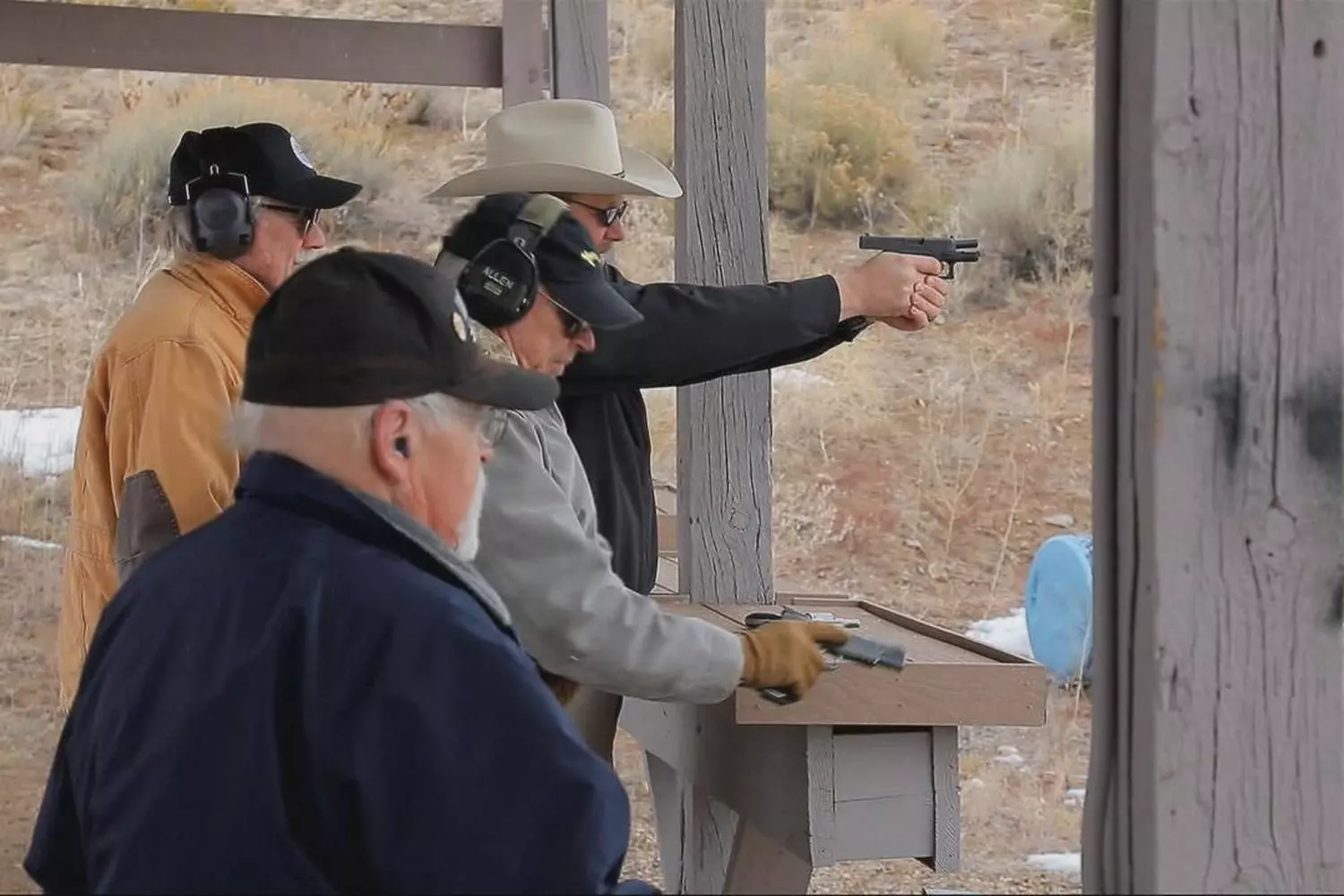
Battle for the Trigger: Why Gun Debates in the U.S. Have Raged for Decades
The issue of the right to own firearms is one of the most heated and emotionally charged topics in American society. The debate is not just about metal and calibers — it concerns values, fears, history, and the country’s future. Arguments "for" and "against" clash in congressional sessions, on TV shows, and at the kitchen tables of millions of Americans.
- 01. What supporters of gun rights say
- The right to self-defense is an inalienable freedom
For many Americans, the Second Amendment to the Constitution is not just a legal formality but a symbol of personal autonomy. The right to protect oneself, one’s family, and property is seen as the foundation of civic responsibility. This is especially important for residents of rural areas where police may be far away and threats can be real and sudden. - Criminals don’t follow laws
One key argument is that stricter control will affect honest people, not those who already ignore laws. "Gun bans won’t stop those who have already decided to cross the line," supporters argue, pointing to the black market, homemade weapons, and cases where offenders bypass all checks. - An armed society is a polite society
A popular quote attributed to writer Robert Heinlein reflects the view that the presence of guns promotes mutual respect. In states with broad rights to carry firearms, there have indeed been cases where armed citizens prevented crimes. According to supporters, knowing that "everyone might have a gun" restrains aggression. - The government should not have full control over citizens
Many see gun ownership not only as a means of protection from criminals but also as a guarantee against potential tyranny. This philosophy has roots in the era of the fight for independence from the British Crown, and it still lives in the minds of those who fear that centralized power could become threatening.
- 02. What opponents of free access to guns say
- The more guns — the higher the level of violence
Opponents often cite statistics: the USA leads developed countries in the number of gun-related deaths. Moreover, studies show that having a gun in the home increases the risk of both homicide and suicide, especially among teenagers and people with unstable mental health. - Mass shootings — a national tragedy
Schools, shopping centers, places of worship — the list of locations that have become arenas of horrific attacks continues. Opponents ask why guns can be so easily obtained by an 18-year-old teenager with unstable mental health or a history of violence? - Other countries handle it differently
Comparisons with Canada, the UK, Japan, and Australia are often used in arguments: these countries have much stricter laws and significantly lower levels of violent crime. This means that tighter controls can be effective. - A modern interpretation of old norms is needed
Critics point out that the Second Amendment was written in the 18th century when guns were single-shot and the concept of a "national militia" was just developing. Today, when citizens possess semi-automatic rifles, the question of the limits of rights takes on new dimensions.
Interestingly, a significant part of the US population is not at the extremes but somewhere in the middle. People are ready to support the right to own guns, but also advocate for stricter background checks, bans on assault weapons, registration, and insurance. This shows that society has matured for dialogue — the question is who and how will moderate it.
The gun debate in the USA is not a dispute about objects. It is a dispute about trust: in the government, in neighbors, and in oneself. And as long as American culture values freedom, individualism, and the right to self-defense, the conversation about guns will remain eternal — like America itself.
When a shot is not protection: tragic cases and the cost of gun availability
America is a country where millions have guns. But along with the right to carry comes the other side: accidents, impulsive tragedies, and mass shootings. Each such incident is not just a number in statistics but broken lives and societal shock.
- 01. Accidents: when home becomes dangerous
One of the most painful topics is when guns end up in children’s hands. For example:
- Tennessee, 2022
A 5-year-old boy found an unlocked pistol in a nightstand and accidentally shot his younger sister. The parents were in the next room. - Arizona, 2023
A child was playing with a rifle, thinking it was a toy. A shot — and tragedy.
Such incidents happen daily, especially in homes where basic firearm storage rules are not followed.
- 02. Mass shootings: when one person changes history
The term "mass shooting" has become part of American vocabulary. It means when a single shooter kills or wounds four or more people. Here are just a few tragic examples:
- Sandy Hook, 2012
20 children and 6 adults died in an elementary school. The shooter was 20 years old. He used a semi-automatic rifle purchased by his mother. - Las Vegas, 2017
A 64-year-old man opened fire on a crowd at a music festival from the 32nd floor of a hotel. 60 people were killed, more than 400 wounded. He had an arsenal of 23 firearms. - Uvalde, Texas, 2022
19 children and 2 teachers died in an elementary school. The shooter was 18 years old. He legally purchased a semi-automatic rifle a few days before the tragedy.
These cases became turning points in public discourse, sparked protests and bills, but in fact, little has changed.
- 03. Suicides: the silent tragedy
A less visible but terribly widespread category is suicides using firearms. They account for more than half of all gun-related deaths in the US. A person in a state of distress, depression, or under the influence of alcohol — and having a gun at hand turns a moment of despair into a point of no return.
American gun culture faces a reality where every unlocked safe, every impulsive act, or unnoticed symptom of mental disorder can cost a life. Accidents and mass shootings are not anomalies; they are side effects of the norm. And the question is not only who owns guns but who and how handles them.
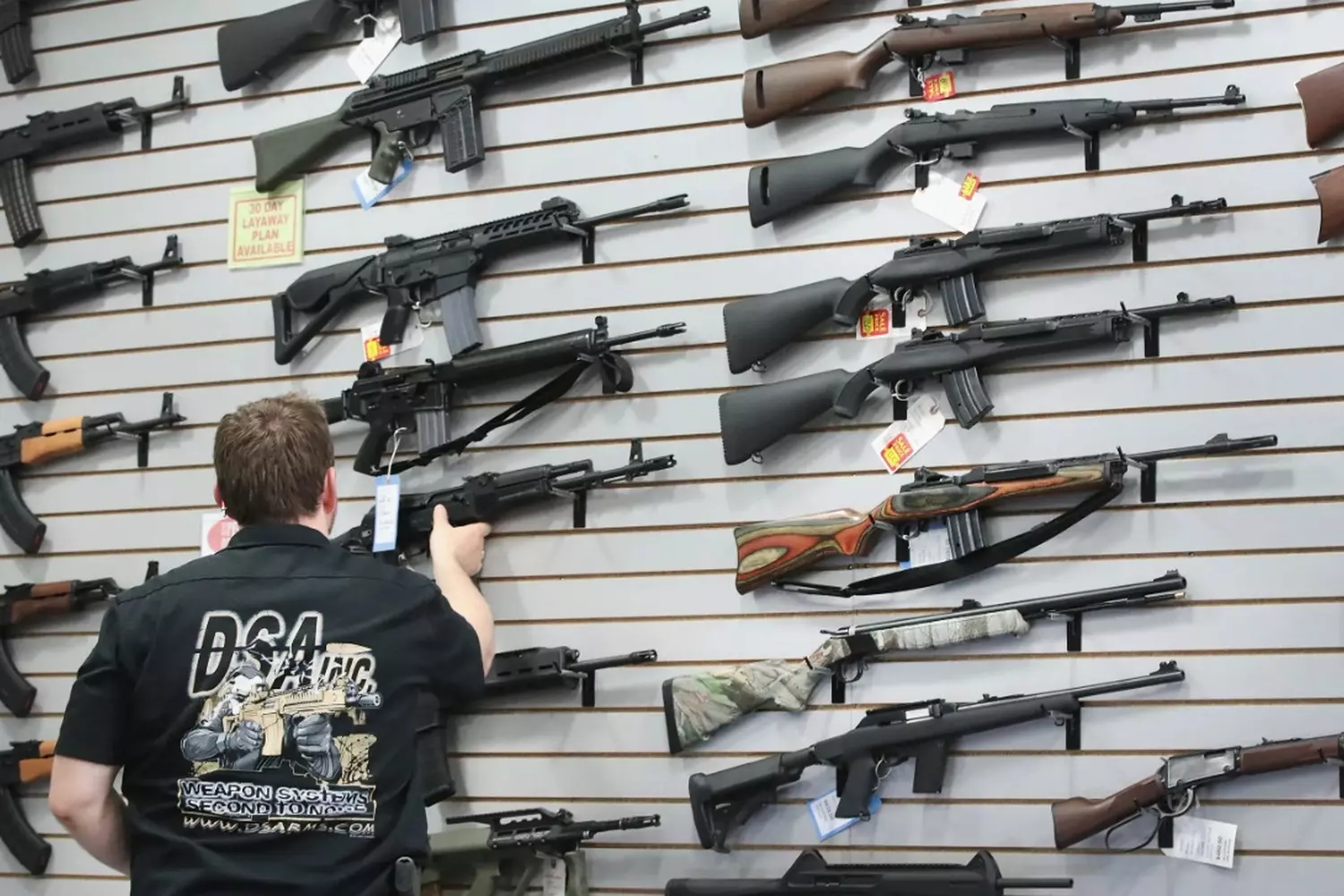
How Legislation Changes: Wave After Wave
ChatGPT сказал:
Gun legislation in the USA resembles ocean tides: each wave of mass shootings triggers an emotional surge, discussions of reform, legislative initiatives… and then a recession. Or pushback. Perhaps no other field faces such powerful social, political, and financial resistance.
- 01. Law written in blood: what sparked the changes
Every shooting at a school, supermarket, or church is not just a tragedy but a public cry for help. It is after such events that Congress, the Senate, governors, and mayors try to introduce measures aimed at preventing repetition. Yet even in this matter, America remains divided. Among recent initiatives are:
- "Red flag laws"
“Red flag” laws. If a person shows signs of mental instability or threatens others, a court can temporarily remove their firearms. These laws are already in effect in more than 20 states, including Florida and New York. They became especially discussed after the Parkland shooting (Florida, 2018), where the shooter exhibited clear dangerous behavior, but there were no mechanisms for intervention. - Federal and local background checks
Procedures for background checks — reviewing the buyer’s history and mental health—have been tightened. Digital databases are increasingly used, and sellers must report suspicious purchases. However, due to a loophole in the law — when sales happen not through official dealers but, for example, at gun shows — control is easily bypassed. - Safe storage laws
In some states (such as Massachusetts, California, Oregon), strict rules require firearms to be kept locked and ammunition stored separately, especially if children live in the home. This regulation is a reaction to incidents where teenagers accessed their parents’ guns and caused school shootings.
- 02. Why everything stalls
The main brake is the powerful gun lobby. The National Rifle Association (NRA) has defended the Second Amendment for decades and actively influences lawmakers through donations, pressure, and propaganda. Every new law is perceived by it as a "slippery slope" toward total disarmament, and any concessions meet fierce resistance. - 03. Laws aren’t the same for everyone
The USA is a federation, meaning each state has its own rules. California enforces a 10-day waiting period for gun purchases, while in Arizona, one can buy a rifle in 15 minutes by showing an ID. Some states ban automatic and assault weapons, while others sell them freely. This creates “gun tourism”: residents of strict states travel to neighbors where laws are looser. - 04. Waves of hope
Nevertheless, slowly but surely, public opinion is shifting. Support for gun control is growing especially among youth. Movements like March for Our Lives, founded by survivors of school shootings, continue to pressure authorities. And every new initiative, even if not yet passed, becomes a building block for future reforms.
Legislation may not have caught up with reality yet, but public demand is already running ahead.
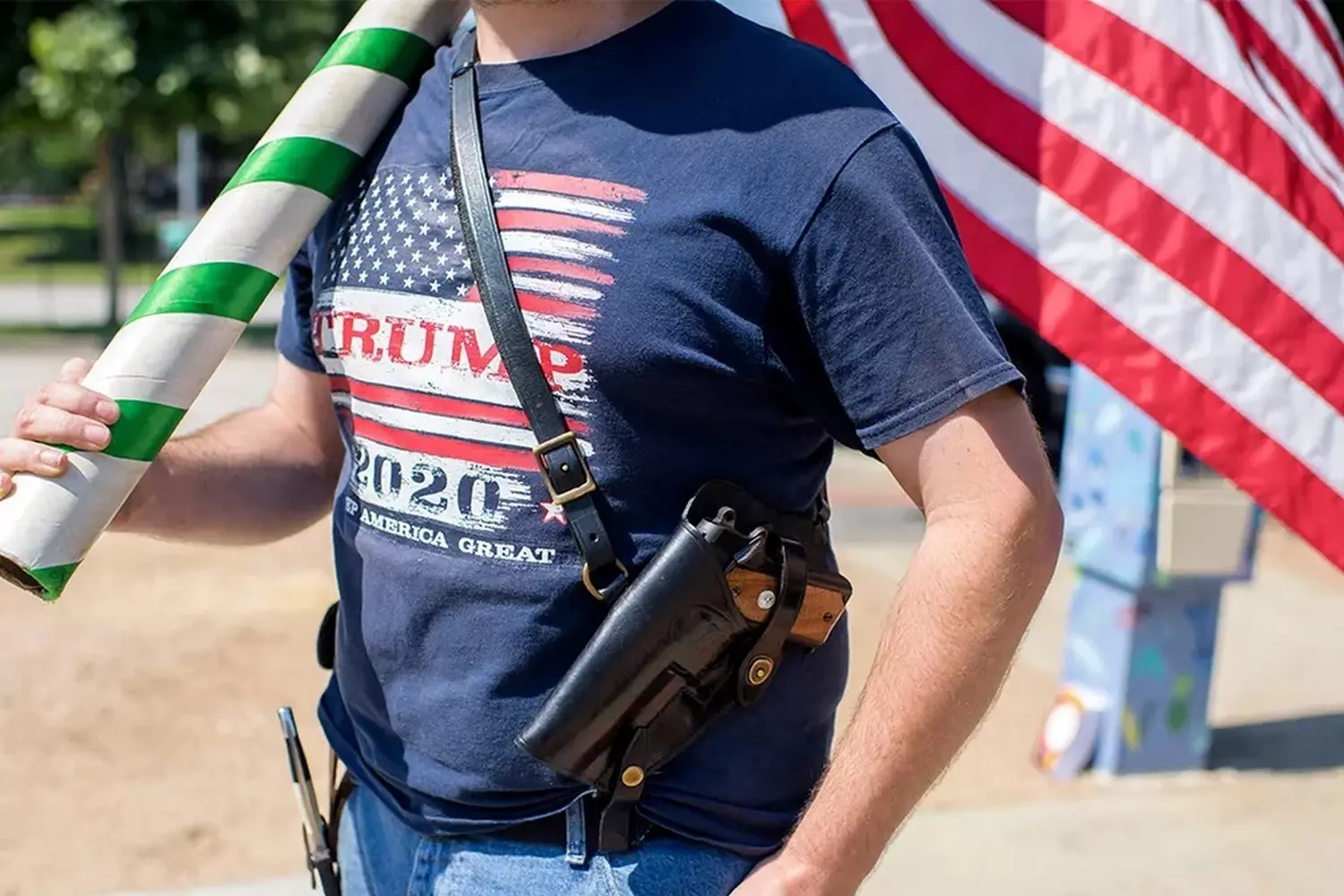
Guns Aren’t for Everyone: From Machine Guns to ‘Ghost Guns’ Without Serial Numbers
In the American gun landscape, certain types of firearms spark especially intense debates — not just because of their power, but due to the complexity of regulating them. These aren’t hunting rifles or antique revolvers. This is weaponry designed not for sport or collection, but for rapid fire. And it is these weapons that are at the heart of major fears and political battles.
- 01. Automatic weapons: a rare beast under ban
Automatic weapons are what movies call “assault rifles” or “machine guns.” Pull the trigger — and the weapon fires continuously until the magazine is empty. This is precisely why they are banned from general sale.
In the USA, fully automatic weapons have been federally regulated since 1934 — under the National Firearms Act (NFA). Later, in 1986, production of automatic weapons for civilians was banned. Such firearms can only be purchased if manufactured before 1986 and registered. The process requires:
- Passing a thorough background check through the ATF (Bureau of Alcohol, Tobacco, Firearms and Explosives);
- Paying a $200 tax;
- Waiting for approval, which can take up to a year;
- Being prepared for possible storage inspections.
In practice, this turns automatic weapons into collector’s items rather than tools for active use.
- 02. Semi-automatic weapons: legal but in the crossfire of regulation
Semi-automatic weapons differ from automatic ones in that they fire one round per trigger pull. However, they do so rapidly, almost without delay. Most modern rifles, including the AR-15, are semi-automatic. These rifles are most frequently involved in mass shootings. Although generally legal in most states, there are some restrictions:
- Magazine type
In some states (like California), magazines holding 30 or more rounds are banned. The maximum allowed is usually 10 rounds. - Design features
Telescoping stocks, pistol grips, compensators, and suppressors may be prohibited. - Age restrictions
In some places, firearms can be purchased at 18; in others, the minimum age is 21. - Waiting periods
Some states require mandatory waiting times between purchase and possession.
After every tragedy in schools or malls, semi-automatic rifles become central to the debate. Their power, accuracy, and ability to inflict harm in seconds make them targets for legislative initiatives.
- 03. Ghost guns: untraceable weapons
The newest and most alarming category is so-called “ghost guns.” These are firearms assembled from parts bought separately, often via 3D printing or underground online markets. They have no serial numbers, are unregistered, and can often be assembled by teenagers with minimal skills.
Until 2022, loopholes allowed “build kits” to be sold without background checks. But rising crime involving such guns — including school shootings — forced the Biden administration to tighten rules:
- Manufacturers and sellers must now imprint serial numbers;
- Buyers are required to undergo identity verification;
- Assembling a gun without registration is now illegal.
Still, dozens of ways to bypass these rules exist on the black market and darknet — causing headaches for law enforcement.
Gun ownership in the USA is not just a question of rights and freedoms. It’s a constant balancing act between public safety and individual responsibility. And the more complex and powerful firearms become, the more sophisticated laws must be. The question remains: can legislation keep pace with technology?
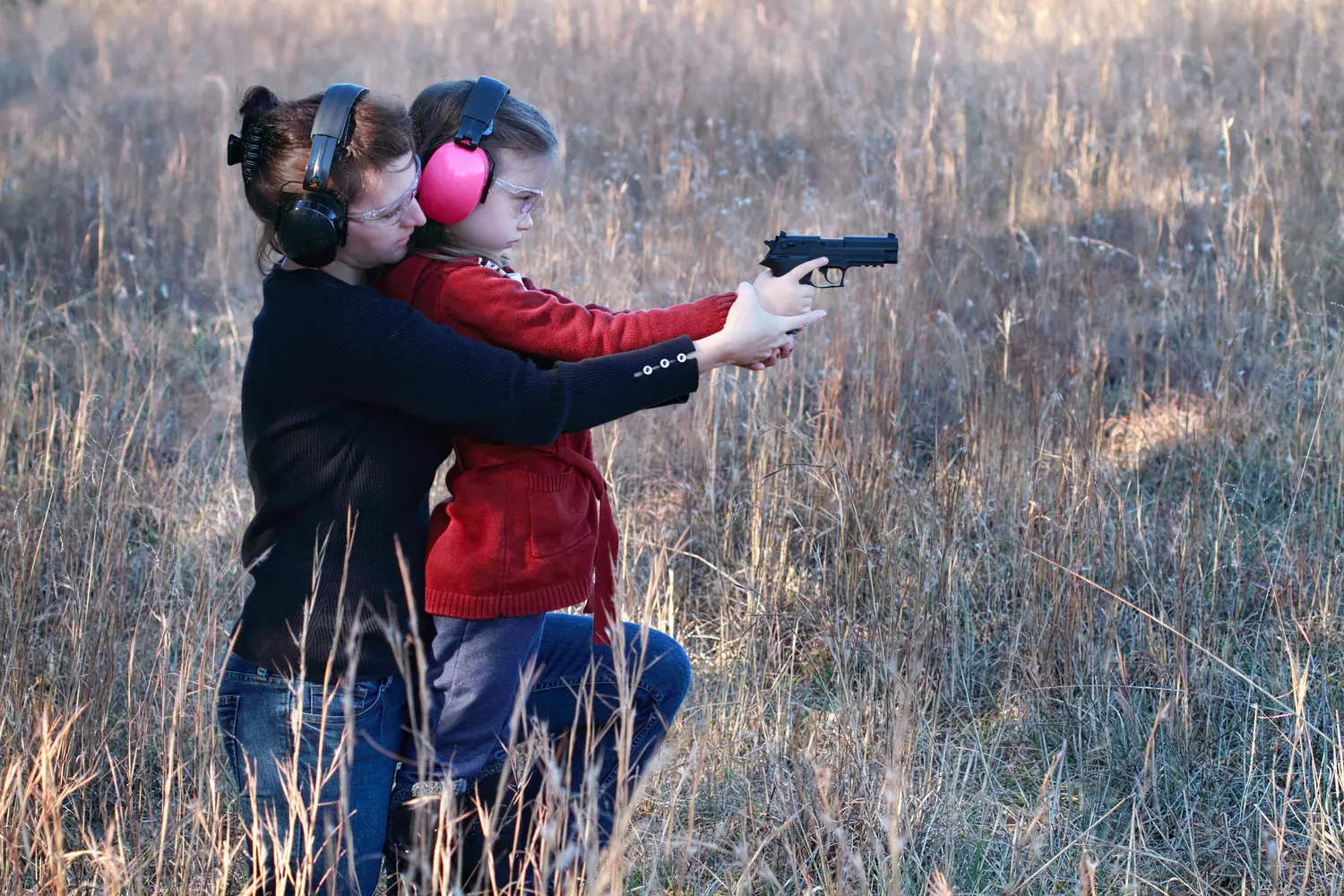
Gun-Free Zones: When “Allowed” Doesn’t Mean “Permitted”
Even if you have a concealed carry permit, it doesn’t mean you can carry your weapon everywhere. In the US, there are numerous "gun-free zones" — areas where carrying firearms is strictly prohibited by law, regardless of the owner’s rights. Violating these rules can lead to serious legal consequences, including arrest and revocation of your license. Let’s take a closer look at where and why these restrictions apply.
- 01. Educational institutions
Schools and universities are among the most strictly protected categories. In many states, possessing a firearm within a certain radius (often up to 300 meters) of an educational institution is a criminal offense. Exceptions are usually made only for police and security personnel. These measures were introduced after a series of tragic events — from Columbine to Uvalde. - 02. Federal and state buildings
Courthouses, city halls, Congress buildings, tax offices, FBI offices, and post offices — all federal properties have a ban on carrying weapons. This rule applies even in states with very liberal gun policies.
Security checks at these buildings are often as strict as at airports: metal detectors, guards, cameras. Licenses don’t matter here — carrying weapons is forbidden under any circumstance. - 03. Airports and airplanes
Firearms can be transported in checked luggage only, unloaded, and with prior notification to the airline. Attempting to bring a weapon through security checkpoints is a serious federal crime and grounds for arrest.
Onboard, only marshals (special agents responsible for flight security) and officers with special permission may carry weapons. - 04. Bars and restaurants serving alcohol
In many states (such as Texas, South Carolina, and Florida), carrying firearms is prohibited in establishments where more than 50% of revenue comes from alcohol sales. The reason is simple: alcohol and guns are a dangerous mix. Even a law-abiding citizen can lose control under the influence.
Some states require venues to display a specific warning sign (for example, the “30.06 sign” in Texas) to officially ban firearms on the premises. - 05. Private property and no-gun signs
American property rights allow owners to set their own rules. If a store, café, or private home displays a “No Firearms Allowed” sign, that ban carries legal weight. Violating it is considered trespassing with a weapon. Signs can be official (legally sanctioned), advisory (non-mandatory but socially respected), or informal (handwritten or sticker notices). - 06. Additional: transportation and religious institutions
Public transportation — subways, buses, train stations — often fall under local firearm bans.
Churches, mosques, synagogues — in some states, these institutions can set their own rules. In some places, firearms are prohibited; in others, allowed with the congregation’s consent.
Gun laws vary greatly from state to state. What’s allowed in Arizona might be illegal in New York. Therefore, before traveling, especially to a different region, it’s crucial to:
- Check local firearm carrying laws;
- Look for no-gun signs at building entrances;
- Respect the rules and others’ right to feel safe.
Even in a country where the Second Amendment guarantees the right to bear arms, there are places where safety and public order take precedence.
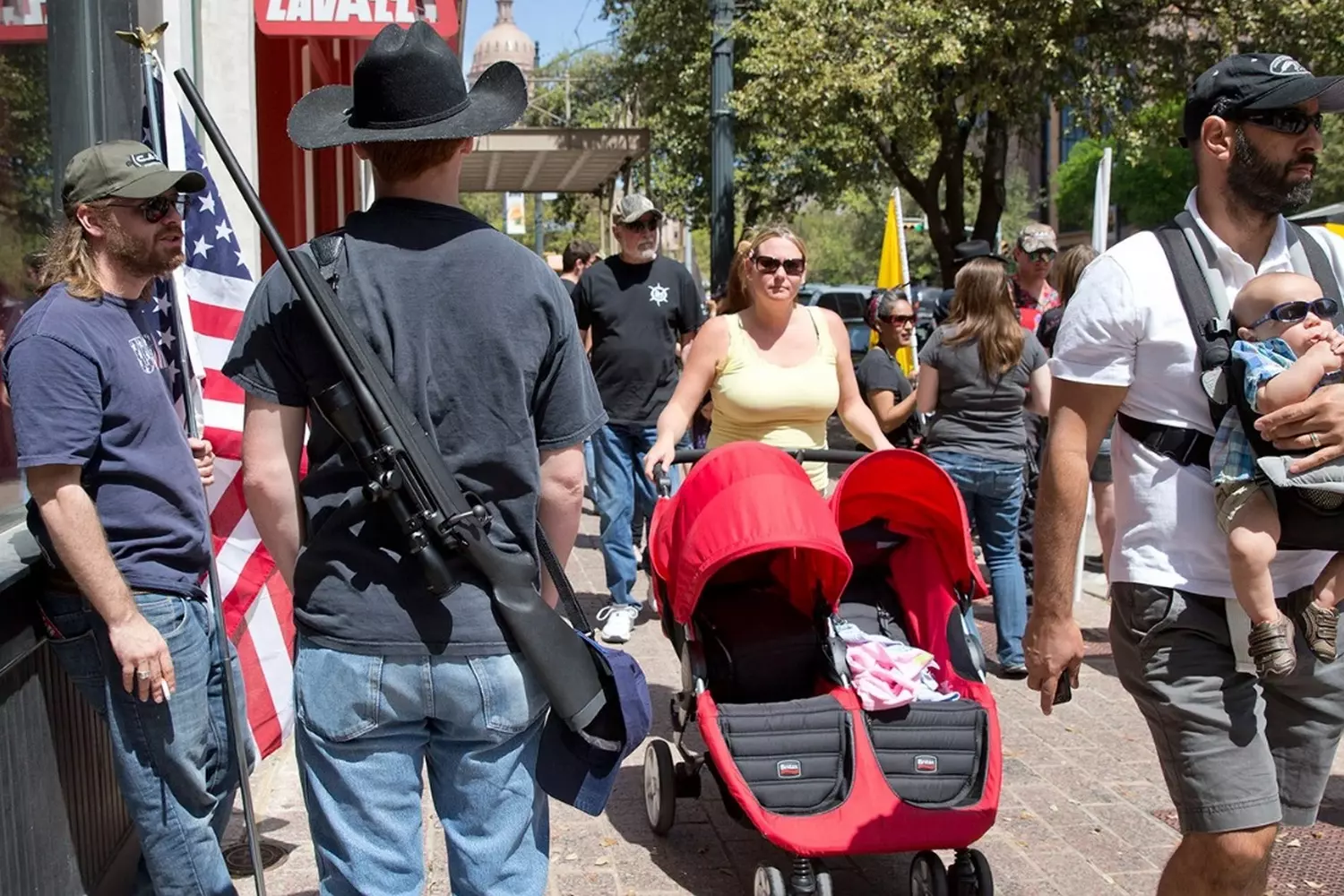
Guns as Part of Everyday Life: Between Habit, Right, and Culture
If you’re visiting the US for the first time and happen to notice a man carrying a revolver in a holster at a coffee shop or a woman with a concealed handgun under her jacket in a supermarket, don’t rush to panic. For many Americans, guns aren’t a symbol of intimidation but a normal part of everyday life—almost like a phone, keys, or a driver’s license.
- 01. Texas: cowboy roots, modern realities
In Texas, attitudes toward guns are steeped in the spirit of the Wild West. Open carry of firearms is allowed, and it’s nothing unusual. A person with a pistol on their hip might be standing in line for a burger or picking up their kids from school. The key condition is having a license (LTC — License to Carry) and following the law. An interesting nuance: some Texans deliberately display their weapons as a political statement or a symbol of personal freedom. - 02. Montana: childhood with a sniper rifle
In northern and mountainous states like Montana, guns are not just tools of protection but part of cultural upbringing. Teenagers as young as 12 participate in shooting clubs, hunting camps, and biathlon competitions. In rural areas, many families keep firearms at home but teach children safe handling from an early age. Schools may offer elective shooting classes or lessons on hunting ethics. - 03. Florida: retirees with pistols
Surprisingly, among the most active concealed carry license holders in Florida are older Americans, especially retirees who have moved to the warm climate. Reasons? Safety, independence, and sometimes life experience (such as former military or police officers). They take courses, pass tests, and regularly refresh their skills. Some even form clubs and organize group shooting sessions at private ranges. - 04. What this says about the culture
The American reality is that guns are not necessarily a sign of danger. Depending on the state, city, or community, they can be:
- A hobby attribute (target shooting, hunting);
- A means of self-defense;
- A cultural marker (patriotism, belief in the Second Amendment);
- A sign of independence and maturity.
At the same time, everyday firearm use is regulated — for example, carrying weapons in bars, schools, or courts is prohibited, and threatening behavior is punished severely, potentially resulting in loss of license and criminal charges.
Conclusion: understanding American attitudes toward guns means understanding the spirit of the country itself: a mix of freedom, individualism, responsibility, and historical memory. And at the same time — a constant balancing act between rights and risks.
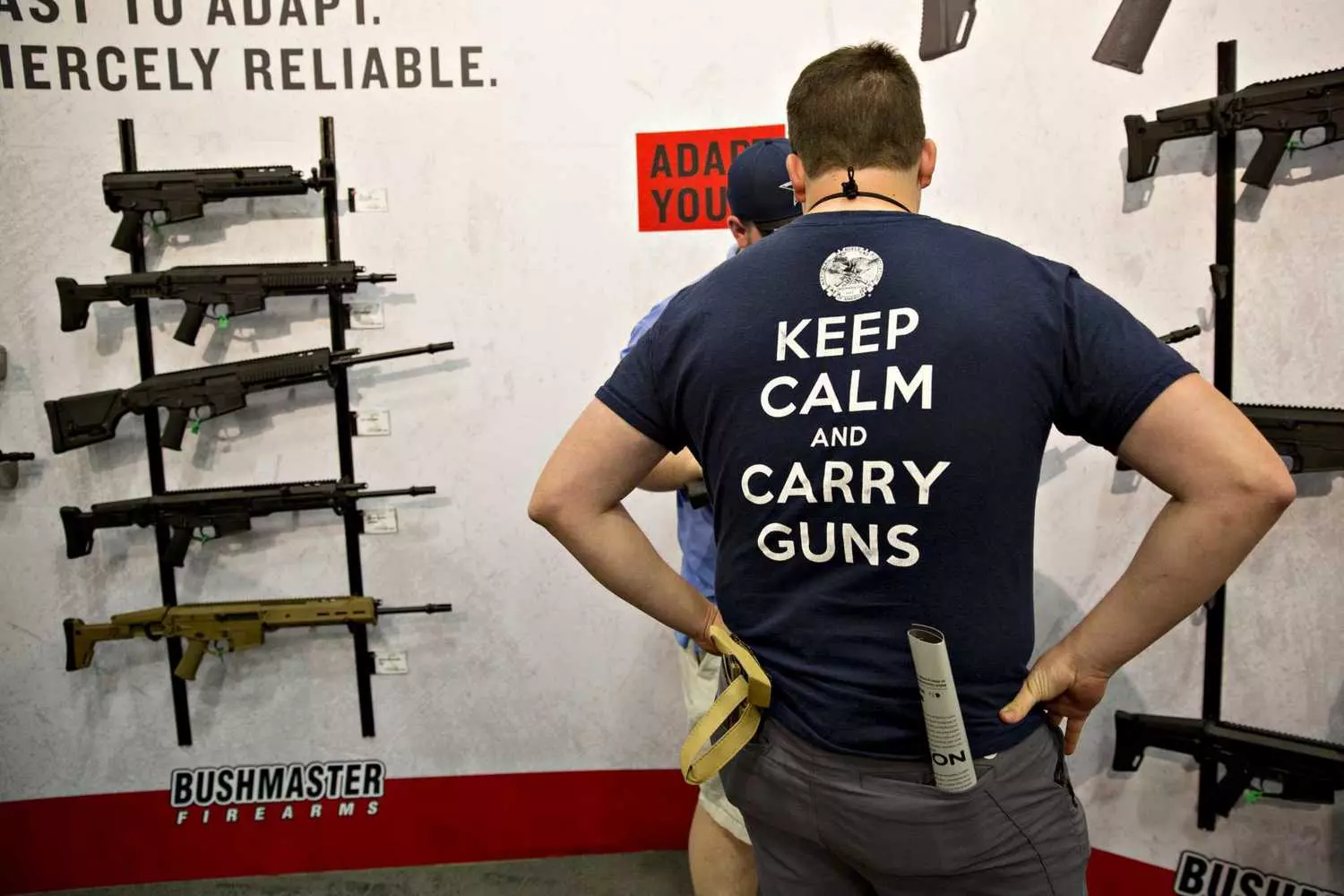
Guns in the U.S.: 15 Facts That Will Surprise You
America is a country where the right to bear arms is enshrined in the Constitution, and debates over gun control have been ongoing for two centuries. But behind the dry statistics and political battles lie surprising details: from towns where every household is required to own a gun to laws that sound like something out of a Western. Here are some facts that reveal the topic from an unexpected perspective.
- 01. A town where owning a gun is mandatory
In Kennesaw, Georgia, since 1982, there has been a law requiring every head of household to own a firearm and ammunition. However, no one is punished for violations, and the mayor calls it a “symbol of safety.” The murder rate here is close to zero, but locals debate whether this is due to the law or the local mentality. - 02. Guns against criminals: controversial statistics
Studies show that in states where concealed carry is allowed, the murder rate is 8% lower and robberies are 7% lower. However, critics point out that guns are more often used in domestic conflicts: for example, they are 22 times more likely to be used against relatives than against criminals. - 03. Automatic weapons are legal but hard to get
After the 1986 ban, new automatic weapons cannot be manufactured for civilians, but older ones (produced before that year) remain in circulation. Prices reach up to $10,000, and buying one requires paying a special tax and FBI background check. - 04. The pandemic armed America
In 2020–2021, 7.5 million Americans bought a gun for the first time, fearing riots and crisis. Meanwhile, 98% of Black women gun owners stated they carry guns solely for self-defense. - 05. In Texas, you can buy a gun faster than beer
In some states (such as Texas and Arizona), private gun sales don’t require background checks. This means you can buy a pistol from a stranger in five minutes — but to buy alcohol, you have to show ID and wait for the cashier. - 06. Carrying guns in churches is allowed
In 10 states, including Texas and Louisiana, parishioners are allowed to bring firearms into churches. Some pastors even hold “shooting courses for Christians,” arguing it’s about “protecting the flock from evil.” - 07. “Gun vending machines” are real
In Arizona and Texas, there are vending machines that sell ammunition. Just enter your fingerprint or credit card — and you get a pack of bullets like a can of cola. - 08. “Kids’ guns” — a legal business
Companies produce carbines and pistols painted like cartoons to attract children. The most famous is the AR-15 with a pink barrel, marketed as the “perfect gift for girls.” - 09. Guns in McDonald’s are common
In several states, fast food restaurant customers openly carry pistols on their belts. In 2014, McDonald’s officially allowed this, stating: “We respect local laws.” - 10. There are more gun stores in the USA than Starbucks
As of 2024, there are about 55,000 stores selling firearms — more than all Starbucks and McDonald’s combined. - 11. “Gun weddings” — a new trend
In Texas and Montana, newlyweds increasingly take themed photos with rifles instead of bouquets, and some even shoot into the air instead of shouting the traditional “cheers!”. - 12. You can order guns by mail in the USA
Until 1968, any American could order a pistol or rifle through a mail-order catalog like an ordinary product. Today this is no longer possible, but in some states guns are delivered directly to homes by courier. - 13. In Arizona, you can buy a machine gun... but only if it’s older than 1986
Federal law allows civilians to own full machine guns, but only if they were manufactured and registered before 1986. Prices for such “antiques” start at $20,000. - 14. “Gun duels” are legal in Mississippi
Technically, duels are still legal in Mississippi if conducted “by mutual consent” and in the presence of a sheriff. However, the last recorded case was in 1951. - 15. There’s a “gun Disneyland” in New Hampshire
The shooting club “Manchester Firing Line” offers themed shooting ranges — such as “Zombie Apocalypse” or “Western-style shootout.” Children are allowed from age 8.
The gun culture in the USA is a mix of freedom, fears, and paradoxes. Some see it as a guarantee of safety, others as a threat, but one thing is clear: the debate is far from over. Meanwhile, in some towns, buying a pistol is as easy as buying bread, while in others, you can go to jail for it.
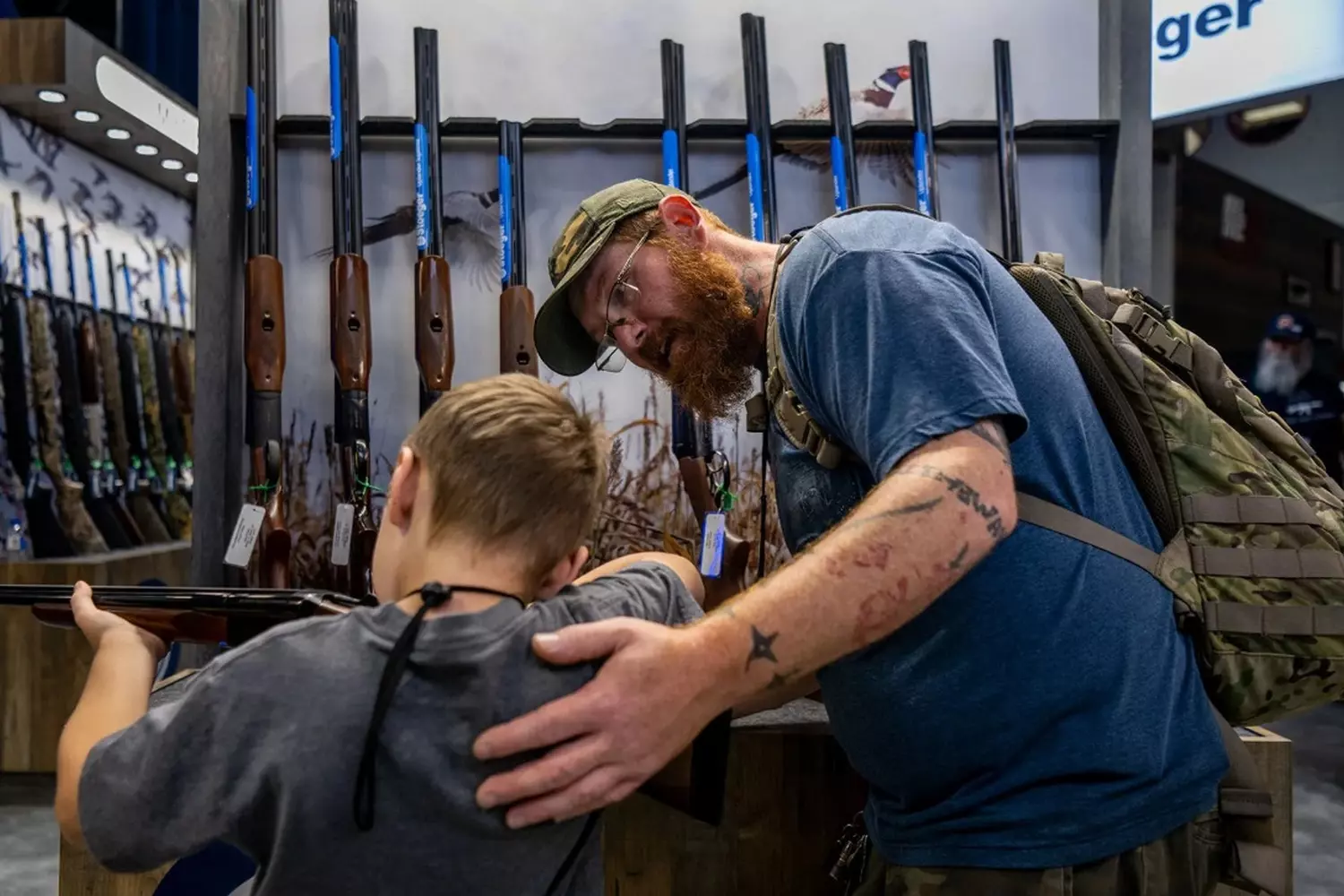
How to Experience American Gun Culture Firsthand
The gun topic is not just articles in the press and heated debates in Congress. It’s also a part of American life that you can only truly understand firsthand. Visit a shooting range, a military museum, a gun exhibition, or talk to a ranch owner — and you’ll see how deeply the idea of the right to bear arms is rooted in the American spirit.
With American Butler, you can explore this topic safely, engagingly, and with respect for the culture. We organize:
- Tours to professional shooting ranges;
- Visits to gun museums and historic clubs;
- Private workshops on safe firearm handling;
- Gun tours to states with different regulations.
Want to see America unfiltered? Book a gun tour with American Butler — and discover the country from a new perspective.
























